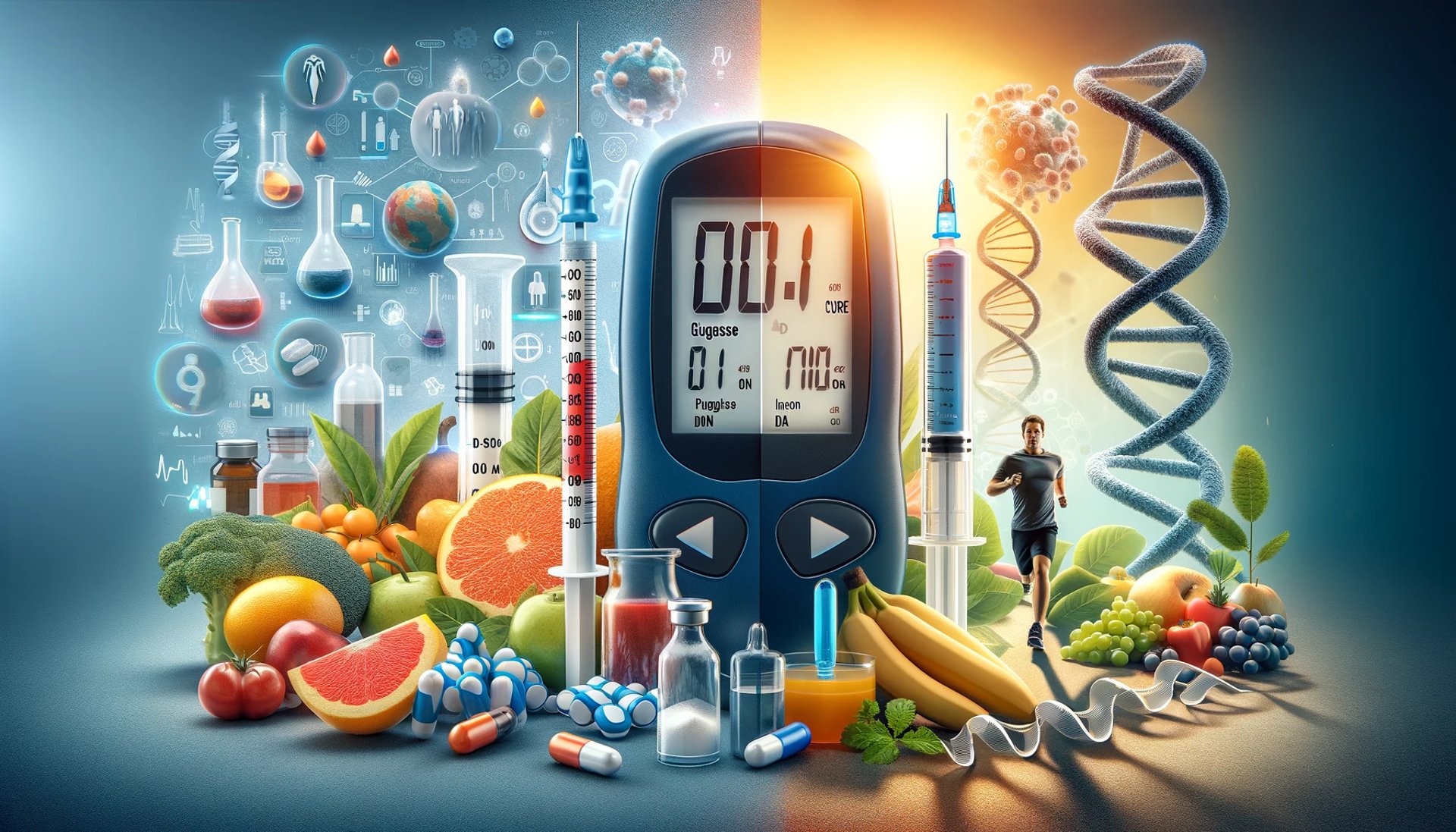
Diabetes Cure?
Type 1 and 2 Diabetes the incurable disease? Lets look and identify a potential for lasting treatment in a way you may find completely unexpected.
5/13/20243 min read
Understanding Diabetes: A Comprehensive Guide to Detection, Prevention, and Management. A cure?
Recent data from the NHS indicates a significant rise in the number of individuals with 'pre-diabetes,' a precursor to type 2 diabetes, reaching almost two million within a year's span. This surge underscores the urgency of addressing the burgeoning diabetes epidemic in our society.
Dr. Mathi Woodhouse, a distinguished practitioner affiliated with Your Doctor, emphasizes the gravity of the situation: "Diabetes stands as one of the swiftest proliferating health concerns in our nation. Presently, the UK hosts four million diagnosed cases of diabetes, a figure on the ascent. Alarmingly, a tenth of the NHS budget is allocated to managing diabetes and its myriad complications."
Understanding the Types and Causes of Diabetes
Type 1 diabetes, constituting 5 to 10% of all diabetes cases, arises from an autoimmune assault on the pancreas, culminating in the destruction of insulin-producing cells. Dr. Woodhouse explicates, "Conversely, type 2 diabetes, encompassing 90-95% of diabetes diagnoses, is largely preventable. Its onset heralds a gradual decline in the body's responsiveness to insulin, a hormone crucial for glucose transportation."
Beyond lifestyle factors, genetic predisposition also plays a pivotal role in type 2 diabetes susceptibility, with heightened prevalence observed among South Asian and Afro-Caribbean populations. Despite its preventability, a substantial portion of type 2 diabetes cases remains undiagnosed.
Recognizing the Symptoms of Diabetes
Both type 1 and type 2 diabetes manifest through telltale signs such as persistent thirst, fatigue, unexplained weight loss, blurred vision, increased urination frequency (especially nocturnal), genital itching, recurrent thrush infections, and delayed wound healing. Consulting a local GP promptly upon experiencing these symptoms is advised.
Distinguishing features between type 1 and type 2 diabetes encompass age of onset, with the former typically afflicting individuals in childhood and the latter manifesting later in life, often correlated with excess body weight. Additionally, while type 1 diabetes is characterized by ketone elevation during diagnosis, type 2 diabetes frequently presents with elevated blood pressure and cholesterol levels.
Risk Factors and Diagnostic Measures
Risk factors predisposing individuals to type 2 diabetes encompass age, familial history, obesity, and ethnic background, particularly among South Asian, Chinese, African Caribbean, or Black African cohorts.
Diagnostic procedures entail tests for glucose levels in urine and blood, with fluctuations in blood glucose levels across the day necessitating careful consideration. A finger-prick blood test, reflecting glucose levels exceeding NICE standards, serves as an initial diagnostic tool. Moreover, the HbA1c blood test, indicative of long-term blood sugar control, offers valuable insights into diabetes and pre-diabetes detection.
Understanding Pre-Diabetes: A Precursor to Type 2 Diabetes
Pre-diabetes denotes a state marked by slightly elevated HbA1c levels, signaling an increased risk of developing type 2 diabetes without intervention. Dr. Woodhouse underscores the significance of proactive measures, elucidating that lifestyle modifications can significantly mitigate this risk, with studies indicating a notable reduction in diabetes incidence among individuals adopting healthier habits.
Treatment Modalities for Type 2 Diabetes
Pharmacological interventions constitute a cornerstone of type 2 diabetes management, with Metformin, an oral hypoglycemic agent, occupying a prominent role due to its efficacy in curbing hepatic glucose production and enhancing insulin sensitivity. Complementary medications, including sulphonylureas, alpha-glucosidase inhibitors, prandial glucose regulators, thiazolidinediones, and incretin mimetics, offer additional therapeutic avenues.
However, lifestyle modifications remain pivotal, particularly for overweight individuals, emphasizing the importance of weight loss and physical activity in diabetes management.
Preventive Measures and Lifestyle Recommendations
Maintaining a healthy weight, adhering to a balanced diet rich in fiber while limiting refined sugars and fats, forms the cornerstone of type 2 diabetes prevention. Dr. Woodhouse advocates for regular meal consumption, incorporating complex carbohydrates and minimizing sugar and fat intake to stabilize blood glucose levels and curb appetite.
Physical activity, comprising aerobic exercises and strength training, alongside smoking cessation and moderate alcohol consumption, assumes paramount importance in mitigating diabetes risk factors and fostering overall well-being.
Key Symptoms of Undiagnosed Diabetes
Frequent nocturnal urination, chronic fatigue, and persistent thirst serve as hallmark symptoms of undiagnosed diabetes, warranting prompt medical evaluation.
The Prospect of Diabetes Management
While diabetes lacks a definitive cure, diligent adherence to lifestyle modifications and pharmacotherapy facilitates effective disease control, enabling individuals to lead fulfilling lives.
Sugar Defender is a popular treatment why not give it a try
Conclusion
In conclusion, diabetes presents a formidable public health challenge, with rising prevalence necessitating concerted efforts toward prevention, early detection, and comprehensive management. By embracing a proactive approach encompassing lifestyle modifications, pharmacological interventions, and regular medical monitoring, individuals can navigate the complexities of diabetes and safeguard their well-being.
References:
- National Health Service (NHS) data on diabetes prevalence and management
- Insights from Dr. Mathi Woodhouse, Your Doctor
- Guidelines from the National Institute for Health and Care Excellence (NICE) regarding diabetes diagnosis and management
